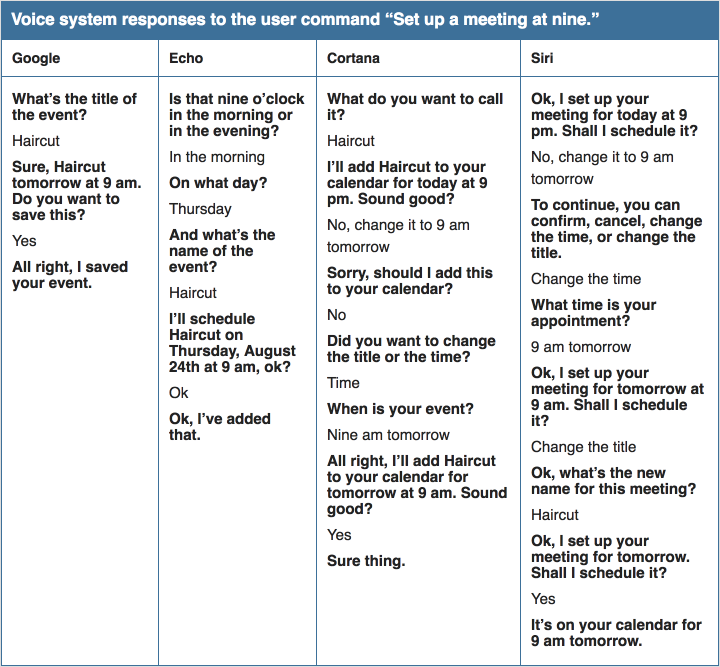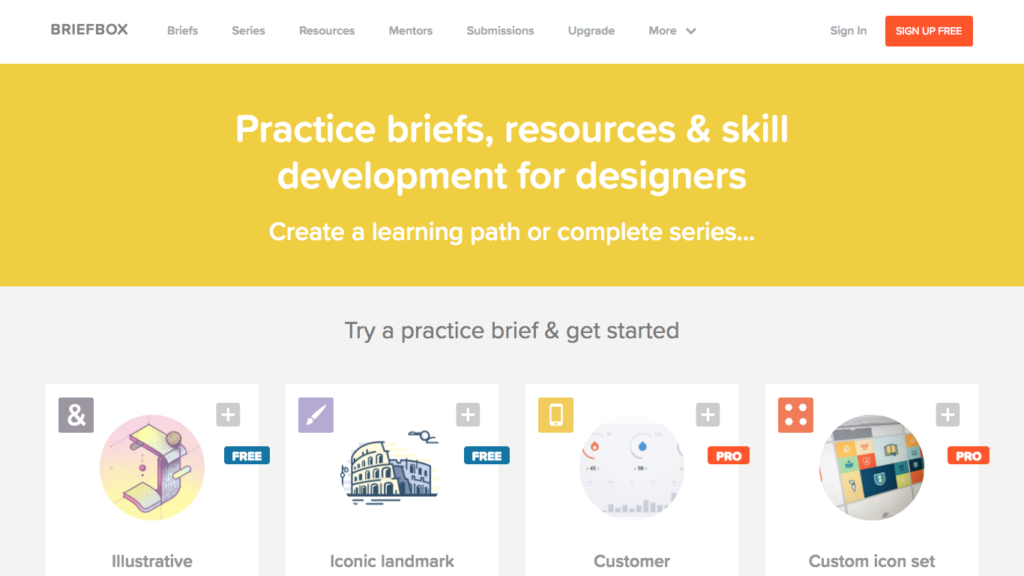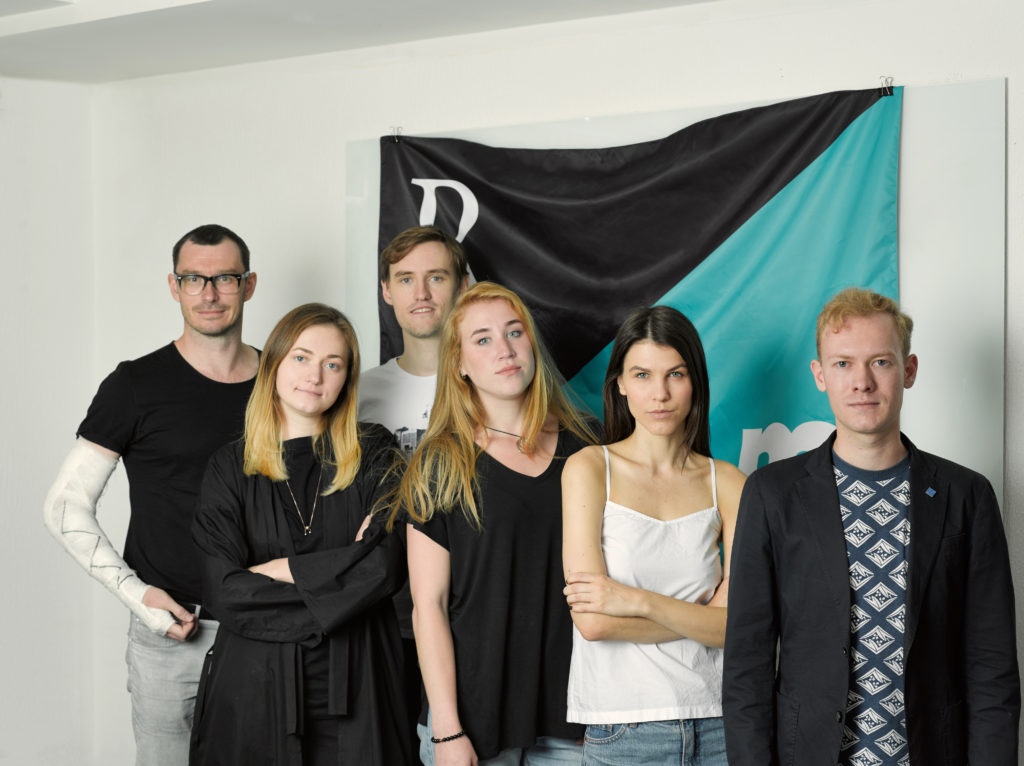Food Design Digest, September 2017
For seven years now I have been publishing regular reviews of recent articles on the topic of interfaces, new tools and collections of patterns, interesting cases and historical stories. From the tapes of several hundred thematic subscriptions, approximately 5% of the worthwhile publications are selected that are interesting to share. Previous materials: April 2010-August 2017 .

What Factors Contribute to Form Submission Rates?
Aytekin Tank collected statistics on their product JotForm and showed how different user behavior on the desktop and mobile, and in different industries.

')
We select sounds for non-game application
Roman Simarev gives advice on working with sound in interfaces. How to create, where to use, when to avoid.
Game Design: When The Least Intuitive Becomes The Most Intuitive
Jorge Hurtado from Habitat Games shows an interesting pattern of interaction with the iPad. When playing poker on one tablet, players cover their screens with their hands, and the touch screen shows cards afterwards.
User Experience Benchmarks for Hotel Websites
Jeff Sauro conducted a comparative testing of the sites of several large hotel chains. The full report is paid, but the article contains key conclusions about typical interface problems.
Mobile Tables - Comparisons and Other Data Tables
Amy Schade from Nielsen / Norman Group lists techniques for presenting complex tables on mobile.
The Ultimate Guide to Designing Activity Feeds
Overview of techniques for designing feed updates on social networks and other products.
UX for the Industrial Environment, Part 2
Jon Walter describes good industrial interface design patterns.
Dark patterns
Baymard institute
iPhone X
Guidelines for the design of the iPhone X with the new screen, in which the top bar for the status bar is only partially available. Added a new screen resolution - 1125 × 2436 (multiplier @ 3x, the physical width has not changed relative to the usual iPhone).

In September, iOS 11 was also released, so many useful materials for designers appeared:
Rambler UI - Components
Rambler & Co. design system

Design System Features, Step-by-Step
Nathan Curtis continues to describe his vision of the workflow for the development of a design system. Standard project management practices applied to the platform.

Continuing the theme:
Building a design system for HealthCare.gov
Sawyer Hollenshead talks about the HealthCare.gov design system architecture. They have an interesting solution with a grid, which is distributed through the NPM-package . Other examples and tools:
Microsoft Fluent Design System
Material design
Customer struggles vs. Solution struggles
Alan Klement writes about the difference between a user's life problem and his problems in working with a specific product. This is an important nuance in the Jobs to Be Done method he is promoting.
Counterfeit or Credible? UX Design for Authenticity in China
Aurora Harley talks about the results of user research in China on the credibility of online shopping. The article outlines the main expectations.
Why Human-Centered Design Needs a Visual Storyteller, and How I Became One
Edward Abbott from Capital One shows how life sketches help the team better focus the team on user issues.
Progressively Elaborated Users
Scott Sehlhorst says that at the start of work on a product it is often necessary to compromise - it is important to understand the user, but a full-fledged study takes a decent amount of time and effort, while the product hypothesis itself may turn out to be false. He suggests an approach in which the understanding of users begins with temporary characters, and then gradually refined.
Sketch
Pixelmator Pro
Pixelmator launches a professional version of the tool - a full-fledged graphic editor that can partially replace Photoshop.
After effects
Figma
Gravit designer
Marvel
Subform
IconFinder Icon Editor
A popular icon search service, Iconfinder, launches an online editor with which you can tweak the icon slightly before downloading.
Pastel - Build better websites with live sticky-note feedback
Another tool for co-commenting site design.
Design tools are running out of track
Colm Tuite reflects on the theme of modern tools for designers - like many others, he criticizes their reference point for creating images. True, references to developers are a bit naive - they often have no less chaos.
The unstuck map
A map of user and market research methods from Niking Blaase of Xing. Very useful reminder that helps step by step to select it for the current problem in the product.

Consultation
Caroline Jarrett and Naintara Land talk about the practice of communicating with subject matter experts before conducting user research, which is widely used in Gov.uk.
How to Determine Task Completion
Jeff Sauro tells you exactly how a user can track a task in moderated and unmoderated studies.
Going global with international research
Charlotte Clancy and her colleagues at the Deliveroo user research team tell some interesting stories from the practice of studying users in other countries. Useful tips on some methods.
Generating
Simon Norris and Peter Kay talk about Nomensa's approach to exploring the attitudes of users in social networks and the conclusions they draw for the product.
Wrangling Difficult Usability Test Participants
Jim Ross gives advice on working with complex respondents during user research. He lists a dozen problems of behavior.
From Research Goals to Usability Testing Scenarios - A 7-Step Method
Susan Farrell describes the Nielsen / Norman Group's step-by-step how to write scripts for usability testing.
Compositor - Tools & Services for Designers, Developers, & Creatives
An interesting experimental set of online tools for designers. One of them allows you to build a website based on your own design system, which can be highly customized. A small video of the work .

CSS Support Guide for Email Clients from Campaign Monitor
Campaign Monitor updated their CSS support guide in popular email clients. What has changed .

XRespond - Virtual Device Lab
Another online service for quick testing of responsive sites at different resolutions. Its creator, Indrek Paas, talks about why it was launched .
Yes, That Web Project Should Be A PWA
An overview of the basic principles of Progressive Web Apps by Aaron Gustafson.
The state of the web
Karolina Szczur brought together topical tips on optimizing site performance. Images, fonts, scripts. Continuing the theme:
Webflow
CSS Grid and Flexbox
Web typography
Building UX Teams at Scale - Inside Atlassian's Bespoke Hiring Process
A rather detailed and capacious story about how Atlassian design teams are arranged. They also write about the hiring process.

Other stories about design teams:
What to expect from PMs
Julie Zhuo helps designers to establish fruitful interaction with product managers. She examines typical problems of mutual understanding and ways to solve them. Part 2 .

Reflections on design management
Ian Schoen described his experience as a trainee curator at Salesforce. It turned out a sensible memo for both.
On Becoming a UX Manager - New Skills, Requirements, and Rewards
Jerrod Larson not bad painted the key skills and responsibilities of the design manager.
OKR Examples - How to write Objectives and Key results?
A gorgeous collection of OKR examples for different teams and products from the Weekdone tool that helps guide them.
Klement - The Ulwick Debate on Driven Innovation
Alan Klement reviewed his many years of controversy with Anthony Ulwick on his concept of "Outcome-Driven Innovation". Alan considers the calculation method unscientific, Anthony proves his point.
Why Design Thinking in Business
Martin Kupp, Jamie Anderson and Jörg Reckhenrich talk about the problems that classical organizations face when introducing design thinking practices. The process and cultural characteristics of such companies contradict many installations of iterative teamwork, so it is important to solve them in order to avoid failure.

Launching Creative Market - Our Playbook for Kickstarting a Marketplace
The founder of Creative Market Aaron Epstein shares instructions on how to launch a template store. A good description of the launch plan, the initial hypotheses and those that were confirmed.

 Vlad Golovach - Design Culture 2.0
Vlad Golovach - Design Culture 2.0
The second edition of Vlad Golovach's chic book “Design Culture” has been published. Vlad spent a lot of time reading books on the history of design as a profession and a cultural phenomenon. This in itself is fascinating, and in relation to its industry, it also helps to get rid of many cliches and cargo cults, which arise due to professional mythology. I managed to read only Adriana Forti and a couple of books on the subject, so thanks to the Design Culture, you can cut off a few corners and cover a lot more.
In the second edition, the focus shifted from history to how the design culture influences the relationship between the designer and the customer. Although the terms are slightly confusing, the very idea of isolating the worldview (knowing what is good) and methods / practices / habits (don't forget to do well). The theme of the formation of design culture in companies is one of the most relevant in recent years and Vlad has an interesting approach from the theoretical side.
In general, if you did not read the first edition, then you missed a lot and the new version of the book will greatly broaden your horizons. If read - the second edition adds a point of practical application of these ideas.
Haters gonna hate - What we can learn from Facebook's 2006 news feed redesign
Mike Frederick Ziethlow recalls the epoch-making launch of the Facebook news feed in 2006, which by external attributes looked like a complete failure - 700 thousand users signed a petition against, about 5% of the audience at that time. But the company understood what it was doing and saw the metrics, so it waited for a wave of negativity, and the insane growth of the user base and profit suggests that it was right. Although it is important to understand that the key here is not suicidal obstinacy, but an understanding of why a redesign is being done and how to understand its effectiveness.
Brandmark
The enthusiast of algorithmic design Jack Qiao launched the Brandmark service for complex design work for small businesses. Also, like Logojoy, it helps to choose a logo and shows examples of its use. But Brandmark went further and assembles the UI Kit in code using corporate identity. Principles of operation of the generator of logos and font pairs . Jack also launched a logo quality and uniqueness analyzer based on Brandmark solutions and a diminutive for them .

Continuing the theme:
Audio Signifiers for Voice Interaction
Kathryn Whitenton from Nielsen / Norman provides many useful tips on how to design and test voice interfaces.

Continuing the theme:
Top Trends in Gartner Hyper Cycle for Emerging Technologies, 2017
In August, a fresh hot technology curve from Gartner came out.

Continuing the theme:
 Jono Yuen - FUI: How It Has Been Designing
Jono Yuen - FUI: How It Has Been Designing
A book about interfaces in the cinema from Jono Yuen, the creator of HUDs & GUIs , one of the main sites on the subject.
Smart watches and bracelets
The virtual reality
Car Interfaces
Fast Co Design Innovation by Design Awards 2017
The most interesting products and experiments of 2017 in terms of design according to Fast Co Design.
Mentor forces
Simon Boboshko, together with his comrades, launched a small service that allows you to consult a professional designer for the price of a cup of coffee. The service is suitable for young designers who need to understand what is wrong with their layout, get advice or art direction of the project as a whole. As well as customers who need an independent assessment of the performer.

Briefbox - Practice briefs, resources & skill development for designers
The service helps novice designers to improve skills - you can download briefs for different tasks and do it in your free time.

Designer's Self-Checklist - What do you want to become?
An excellent checklist for grocery designer from Geunbae "GB" Lee from Facebook.

Launching Your Design Career - Which Type Of Education Is The Best For You?
Alec McGuffey compares in some detail different ways to get a design education: university programs, short-term courses, internships, online courses.
Top Online Graphic Design Courses
Comparative collection of online courses on interface design.
Baymard Institute Studies
Bamard launched e-commerce interface design experts certification.
Does HCI scale? Scale hacking and the relevance of HCI
Barry Brown, Susanne Bødker and Kristina Höök reflect on how a profession can develop in an era of multi-channel interaction and constantly changing products, when old methods are not always suitable.
Roundups - Curated collection of newsletters & roundups for designers
Selection of mailings on the subject of grocery design.
Readymag - How Russian designers have created a tool for online publishing, which is used throughout the world
History of the creation of the domestic publishing tool Readymag and interviews with its creators.

Russian augmented reality - as a graduate of the MAI became the visionary of Google
RBC told about the history of the career of Ivan Pupyrev, who managed to make many interesting projects for Sony, Disney and Google. He combines the skills of an inventor and a businessman well.

UX Week 2017
The UX Week 2017 conference was held from August 29 to September 1 in San Francisco, USA. Review of performances with all videos.
Fresh links can also be tracked in the Facebook group of the same name or received once a month by mail . Thanks to everyone who also publishes links in it, especially Gennady Dragun, Pavel Skripkin, Dmitry Podluzhny, Anton Artyomov, Denis Efremov, Alexey Kopylov, Taras Brizitsky, Yevgeny Sokolov and Anton Oleinik. More and more materials in reviews appear thanks to them.

Patterns and best practices
What Factors Contribute to Form Submission Rates?
Aytekin Tank collected statistics on their product JotForm and showed how different user behavior on the desktop and mobile, and in different industries.

')
We select sounds for non-game application
Roman Simarev gives advice on working with sound in interfaces. How to create, where to use, when to avoid.
Game Design: When The Least Intuitive Becomes The Most Intuitive
Jorge Hurtado from Habitat Games shows an interesting pattern of interaction with the iPad. When playing poker on one tablet, players cover their screens with their hands, and the touch screen shows cards afterwards.
User Experience Benchmarks for Hotel Websites
Jeff Sauro conducted a comparative testing of the sites of several large hotel chains. The full report is paid, but the article contains key conclusions about typical interface problems.
Mobile Tables - Comparisons and Other Data Tables
Amy Schade from Nielsen / Norman Group lists techniques for presenting complex tables on mobile.
The Ultimate Guide to Designing Activity Feeds
Overview of techniques for designing feed updates on social networks and other products.
UX for the Industrial Environment, Part 2
Jon Walter describes good industrial interface design patterns.
Dark patterns
- Roman Cheplyaka dismantled the dark patterns that Booking.com uses - one of the champions in this business.
Baymard institute
- Baymard summarized the conclusions and recommendations of their latest articles and listed 19 tips for improving the online shopping interfaces .
Design systems and guidelines
iPhone X
Guidelines for the design of the iPhone X with the new screen, in which the top bar for the status bar is only partially available. Added a new screen resolution - 1125 × 2436 (multiplier @ 3x, the physical width has not changed relative to the usual iPhone).

In September, iOS 11 was also released, so many useful materials for designers appeared:
- Overview of the main innovations of iOS 11 with links to specific guidelines.
- Updated guidelines for icons . Outline icons are now outlawed, so you no longer have to make a separate set for Android and iOS.
- The iPhone X Photoshop template from Michael Flarup .
- The iPhone X template for Sketch and Photoshop from Ruslan Latypov .
- Features of the development of applications for iPhone X.
- How to crutch a layout of mobile sites under the crutch solution with the "boundless" iPhoneX . A rather sad example of a return to basics is "optimized for viewing in Netscape Navigator."
- Ryan Lau examines in detail the differences in the design of screens and applications iOS 11 . Judging by the volume of minor problems, with the design system at the technological level of the problem and here.
- IOS 11 templates for Sketch from Great Simple Studio .
Rambler UI - Components
Rambler & Co. design system

Design System Features, Step-by-Step
Nathan Curtis continues to describe his vision of the workflow for the development of a design system. Standard project management practices applied to the platform.

Continuing the theme:
- Nathan Curtis gives advice on the organization of the process of incorporating new components into the design system . When they need to be added, how to build a process.
Building a design system for HealthCare.gov
Sawyer Hollenshead talks about the HealthCare.gov design system architecture. They have an interesting solution with a grid, which is distributed through the NPM-package . Other examples and tools:
- Presentation by Liv Madsen from Eden Spiekermann on design systems . The presentation itself is basic, but the interest of classical branding agencies to the topic is indicative.
- Design system of the main Finnish mobile operator Elisa .
- Northstar, another IBM design system .
- The Modulz framework for creating design systems from Colm Tuite.
- Design system of the European railway company Eurostar .
- Trello Nachos design system .
- Sergey Nikishkin spoke about the Acronis design system . The first part deals more with the UI Kit device, but shows a bundle with the component library on Angular.
Microsoft Fluent Design System
- Microsoft's Cara Tyler talks about how they created an experimental weather app for HoloLens based on Fluent Design's visual language, which also adapts to familiar interfaces .
- Microsoft's Mike Jacobs tells how the Fluent Design design system uses the physical description of light as one of the key principles . A good example in the piggy bank poetizatsiya basic installations of a single design.
Material design
- The best apps for Android in 2017 according to the Google design team.
Understanding the user
Customer struggles vs. Solution struggles
Alan Klement writes about the difference between a user's life problem and his problems in working with a specific product. This is an important nuance in the Jobs to Be Done method he is promoting.
Counterfeit or Credible? UX Design for Authenticity in China
Aurora Harley talks about the results of user research in China on the credibility of online shopping. The article outlines the main expectations.
Why Human-Centered Design Needs a Visual Storyteller, and How I Became One
Edward Abbott from Capital One shows how life sketches help the team better focus the team on user issues.
Progressively Elaborated Users
Scott Sehlhorst says that at the start of work on a product it is often necessary to compromise - it is important to understand the user, but a full-fledged study takes a decent amount of time and effort, while the product hypothesis itself may turn out to be false. He suggests an approach in which the understanding of users begins with temporary characters, and then gradually refined.
Design and design of interface screens
Sketch
- Alembic plugin extracts color palette from photo .
- Sketch Exchanger plugin converts Sketch layouts to JSON and back .
- A good UI Kit from Jan Losert with sensible organization of characters .
Pixelmator Pro
Pixelmator launches a professional version of the tool - a full-fledged graphic editor that can partially replace Photoshop.
After effects
- A selection of training materials on working with After Effects from the Ueno design studio , which does a lot of bright work.
- Juan F. Mena has adapted the Bodymovin 'plugin to work with Framer . The story of how and why .
Figma
Gravit designer
- Version 3.2 has been released with catch-up updates , including symbols .
Marvel
- We launched a tool for parsing and documentation of interfaces Handoff , its analogue of Zeplin.
Subform
- Subform launched an open beta . True, it costs $ 25 per month - slightly over the edge to take money for the beta of a new unknown product.
IconFinder Icon Editor
A popular icon search service, Iconfinder, launches an online editor with which you can tweak the icon slightly before downloading.
Pastel - Build better websites with live sticky-note feedback
Another tool for co-commenting site design.
Design tools are running out of track
Colm Tuite reflects on the theme of modern tools for designers - like many others, he criticizes their reference point for creating images. True, references to developers are a bit naive - they often have no less chaos.
User research and testing, analytics
The unstuck map
A map of user and market research methods from Niking Blaase of Xing. Very useful reminder that helps step by step to select it for the current problem in the product.

Consultation
Caroline Jarrett and Naintara Land talk about the practice of communicating with subject matter experts before conducting user research, which is widely used in Gov.uk.
How to Determine Task Completion
Jeff Sauro tells you exactly how a user can track a task in moderated and unmoderated studies.
Going global with international research
Charlotte Clancy and her colleagues at the Deliveroo user research team tell some interesting stories from the practice of studying users in other countries. Useful tips on some methods.
Generating
Simon Norris and Peter Kay talk about Nomensa's approach to exploring the attitudes of users in social networks and the conclusions they draw for the product.
Wrangling Difficult Usability Test Participants
Jim Ross gives advice on working with complex respondents during user research. He lists a dozen problems of behavior.
From Research Goals to Usability Testing Scenarios - A 7-Step Method
Susan Farrell describes the Nielsen / Norman Group's step-by-step how to write scripts for usability testing.
Visual programming and browser design
Compositor - Tools & Services for Designers, Developers, & Creatives
An interesting experimental set of online tools for designers. One of them allows you to build a website based on your own design system, which can be highly customized. A small video of the work .

CSS Support Guide for Email Clients from Campaign Monitor
Campaign Monitor updated their CSS support guide in popular email clients. What has changed .

XRespond - Virtual Device Lab
Another online service for quick testing of responsive sites at different resolutions. Its creator, Indrek Paas, talks about why it was launched .
Yes, That Web Project Should Be A PWA
An overview of the basic principles of Progressive Web Apps by Aaron Gustafson.
The state of the web
Karolina Szczur brought together topical tips on optimizing site performance. Images, fonts, scripts. Continuing the theme:
- Tammy Everts shows a disappointing trend - the average page size of the site is now 3 megabytes and will soon grow to 4 MB . She also studied the trends of recent years - which part takes the most. The weight of images, videos and scripts is growing.
Webflow
CSS Grid and Flexbox
- Rachel Andrew began a series of practical articles on the use of CSS Grid , which became the standard in March 2017 and appeared in Chrome, Firefox and Safari.
Web typography
- François Poizat, one of the creators of the Prototypo font tool, talks about the difference between variable and parametric fonts and shows how to work with the latest in Prototypo .
UX strategy and management
Building UX Teams at Scale - Inside Atlassian's Bespoke Hiring Process
A rather detailed and capacious story about how Atlassian design teams are arranged. They also write about the hiring process.

Other stories about design teams:
- Pavel Knyazev from VKontakte talks about how the design team is organized , its process and tools, as well as the update of mobile applications for Android and iOS.
- Creative Director of one of the Microsoft product teams David Nelson talks about the principles of its work .
- Ashleigh Axios continues the article on redesigning Automattic design .
What to expect from PMs
Julie Zhuo helps designers to establish fruitful interaction with product managers. She examines typical problems of mutual understanding and ways to solve them. Part 2 .

Reflections on design management
Ian Schoen described his experience as a trainee curator at Salesforce. It turned out a sensible memo for both.
On Becoming a UX Manager - New Skills, Requirements, and Rewards
Jerrod Larson not bad painted the key skills and responsibilities of the design manager.
Product management and analytics
OKR Examples - How to write Objectives and Key results?
A gorgeous collection of OKR examples for different teams and products from the Weekdone tool that helps guide them.
Klement - The Ulwick Debate on Driven Innovation
Alan Klement reviewed his many years of controversy with Anthony Ulwick on his concept of "Outcome-Driven Innovation". Alan considers the calculation method unscientific, Anthony proves his point.
Methodologies, procedures, standards
Why Design Thinking in Business
Martin Kupp, Jamie Anderson and Jörg Reckhenrich talk about the problems that classical organizations face when introducing design thinking practices. The process and cultural characteristics of such companies contradict many installations of iterative teamwork, so it is important to solve them in order to avoid failure.

Cases
Launching Creative Market - Our Playbook for Kickstarting a Marketplace
The founder of Creative Market Aaron Epstein shares instructions on how to launch a template store. A good description of the launch plan, the initial hypotheses and those that were confirmed.

Story
 Vlad Golovach - Design Culture 2.0
Vlad Golovach - Design Culture 2.0 The second edition of Vlad Golovach's chic book “Design Culture” has been published. Vlad spent a lot of time reading books on the history of design as a profession and a cultural phenomenon. This in itself is fascinating, and in relation to its industry, it also helps to get rid of many cliches and cargo cults, which arise due to professional mythology. I managed to read only Adriana Forti and a couple of books on the subject, so thanks to the Design Culture, you can cut off a few corners and cover a lot more.
In the second edition, the focus shifted from history to how the design culture influences the relationship between the designer and the customer. Although the terms are slightly confusing, the very idea of isolating the worldview (knowing what is good) and methods / practices / habits (don't forget to do well). The theme of the formation of design culture in companies is one of the most relevant in recent years and Vlad has an interesting approach from the theoretical side.
In general, if you did not read the first edition, then you missed a lot and the new version of the book will greatly broaden your horizons. If read - the second edition adds a point of practical application of these ideas.
Haters gonna hate - What we can learn from Facebook's 2006 news feed redesign
Mike Frederick Ziethlow recalls the epoch-making launch of the Facebook news feed in 2006, which by external attributes looked like a complete failure - 700 thousand users signed a petition against, about 5% of the audience at that time. But the company understood what it was doing and saw the metrics, so it waited for a wave of negativity, and the insane growth of the user base and profit suggests that it was right. Although it is important to understand that the key here is not suicidal obstinacy, but an understanding of why a redesign is being done and how to understand its effectiveness.
Trends
Brandmark
The enthusiast of algorithmic design Jack Qiao launched the Brandmark service for complex design work for small businesses. Also, like Logojoy, it helps to choose a logo and shows examples of its use. But Brandmark went further and assembles the UI Kit in code using corporate identity. Principles of operation of the generator of logos and font pairs . Jack also launched a logo quality and uniqueness analyzer based on Brandmark solutions and a diminutive for them .

Continuing the theme:
- Robert Hart reflects on the topic of who owns the copyright of a work or product created using algorithmic design .
- Facebook has learned how to automatically fix problems when shooting panoramic photos .
- Quickly removing and changing the background from portrait photography is built into the standard iOS 11 photo app — the solution has become quite widespread.
- Joyce Chou, Oscar Murillo and Roger Ibars from Microsoft write about the prejudices that can be embedded in products using artificial intelligence . It is important that the training set and other aspects take this into account.
- Facebook's Erica Virtue talks about how to improve the feature recommending points of interest using AI .
Audio Signifiers for Voice Interaction
Kathryn Whitenton from Nielsen / Norman provides many useful tips on how to design and test voice interfaces.

Continuing the theme:
- Amazon and Microsoft decided to combine their voice interface development efforts, so now Alexa and Cortana will be integrated .
Top Trends in Gartner Hyper Cycle for Emerging Technologies, 2017
In August, a fresh hot technology curve from Gartner came out.

Continuing the theme:
- Fabricio Teixeira's ridiculous approach to defining trends in the UX - he took clues in Google search, continuing questions about the interfaces .
 Jono Yuen - FUI: How It Has Been Designing
Jono Yuen - FUI: How It Has Been Designing A book about interfaces in the cinema from Jono Yuen, the creator of HUDs & GUIs , one of the main sites on the subject.
Smart watches and bracelets
The virtual reality
- Ada Rose Edwards gave an overview of how virtual reality support works in browsers .
Car Interfaces
- Advertising platforms got to the machines - Adobe added this feature to its Experience Cloud .
- Autonomous cars learn much faster in virtual reality, so Google launched the Carcraft platform for this.
Fast Co Design Innovation by Design Awards 2017
The most interesting products and experiments of 2017 in terms of design according to Fast Co Design.
For general and professional development
Mentor forces
Simon Boboshko, together with his comrades, launched a small service that allows you to consult a professional designer for the price of a cup of coffee. The service is suitable for young designers who need to understand what is wrong with their layout, get advice or art direction of the project as a whole. As well as customers who need an independent assessment of the performer.

Briefbox - Practice briefs, resources & skill development for designers
The service helps novice designers to improve skills - you can download briefs for different tasks and do it in your free time.

Designer's Self-Checklist - What do you want to become?
An excellent checklist for grocery designer from Geunbae "GB" Lee from Facebook.

Launching Your Design Career - Which Type Of Education Is The Best For You?
Alec McGuffey compares in some detail different ways to get a design education: university programs, short-term courses, internships, online courses.
Top Online Graphic Design Courses
Comparative collection of online courses on interface design.
Baymard Institute Studies
Bamard launched e-commerce interface design experts certification.
Does HCI scale? Scale hacking and the relevance of HCI
Barry Brown, Susanne Bødker and Kristina Höök reflect on how a profession can develop in an era of multi-channel interaction and constantly changing products, when old methods are not always suitable.
Roundups - Curated collection of newsletters & roundups for designers
Selection of mailings on the subject of grocery design.
People and companies in the industry
Readymag - How Russian designers have created a tool for online publishing, which is used throughout the world
History of the creation of the domestic publishing tool Readymag and interviews with its creators.

Russian augmented reality - as a graduate of the MAI became the visionary of Google
RBC told about the history of the career of Ivan Pupyrev, who managed to make many interesting projects for Sony, Disney and Google. He combines the skills of an inventor and a businessman well.

Conference proceedings
UX Week 2017
The UX Week 2017 conference was held from August 29 to September 1 in San Francisco, USA. Review of performances with all videos.
Fresh links can also be tracked in the Facebook group of the same name or received once a month by mail . Thanks to everyone who also publishes links in it, especially Gennady Dragun, Pavel Skripkin, Dmitry Podluzhny, Anton Artyomov, Denis Efremov, Alexey Kopylov, Taras Brizitsky, Yevgeny Sokolov and Anton Oleinik. More and more materials in reviews appear thanks to them.
Subscribe to the newsletter ! A letter arrives once a month.
Source: https://habr.com/ru/post/339558/
All Articles